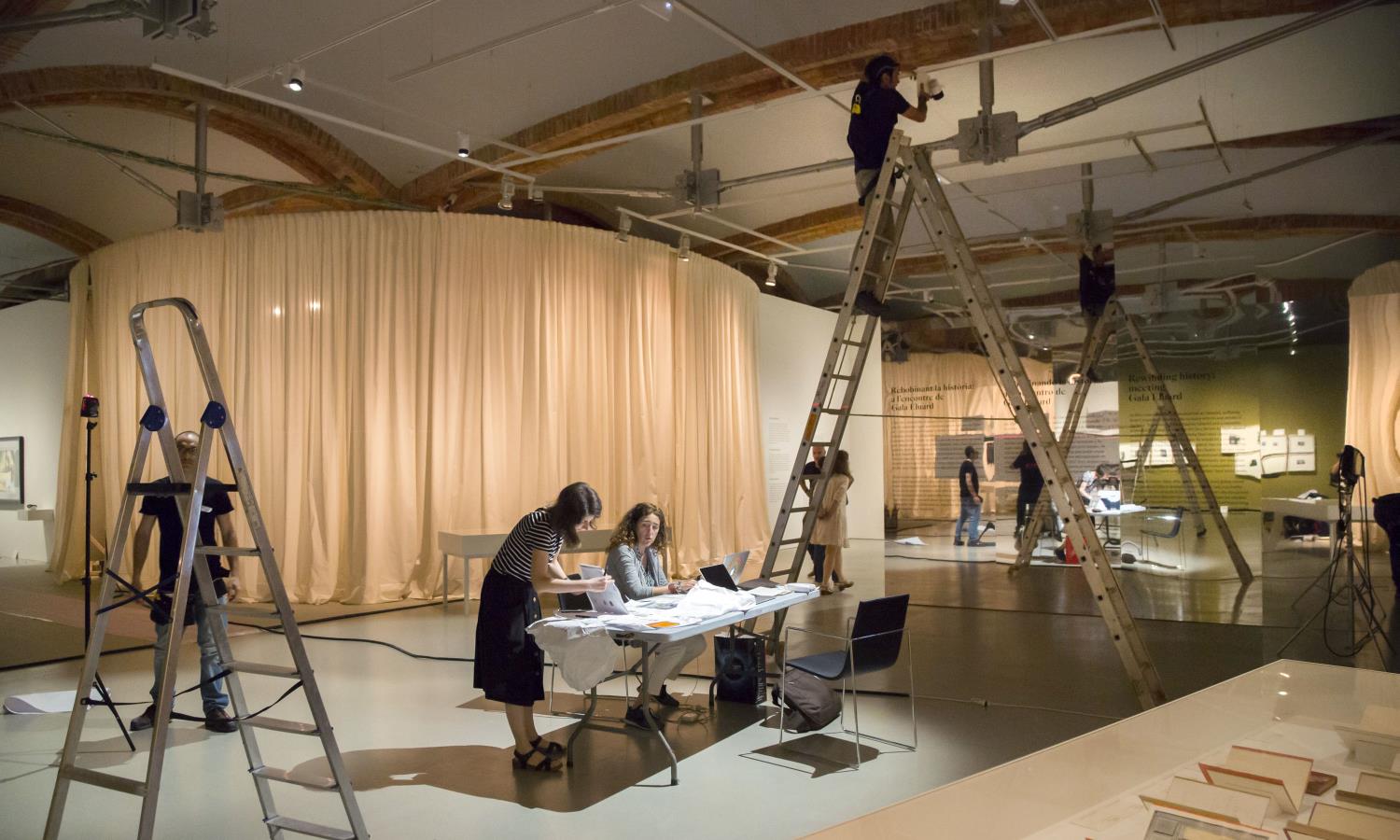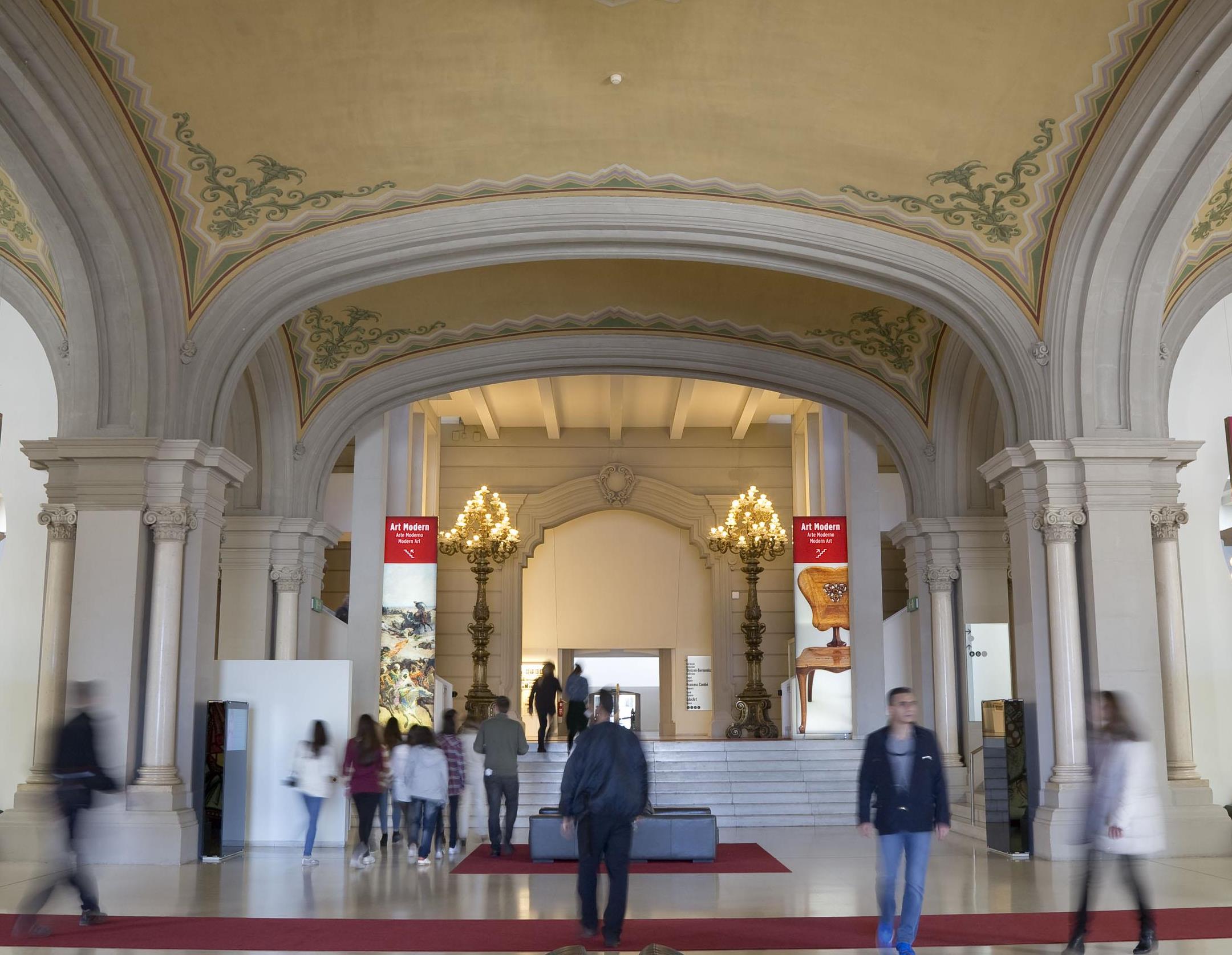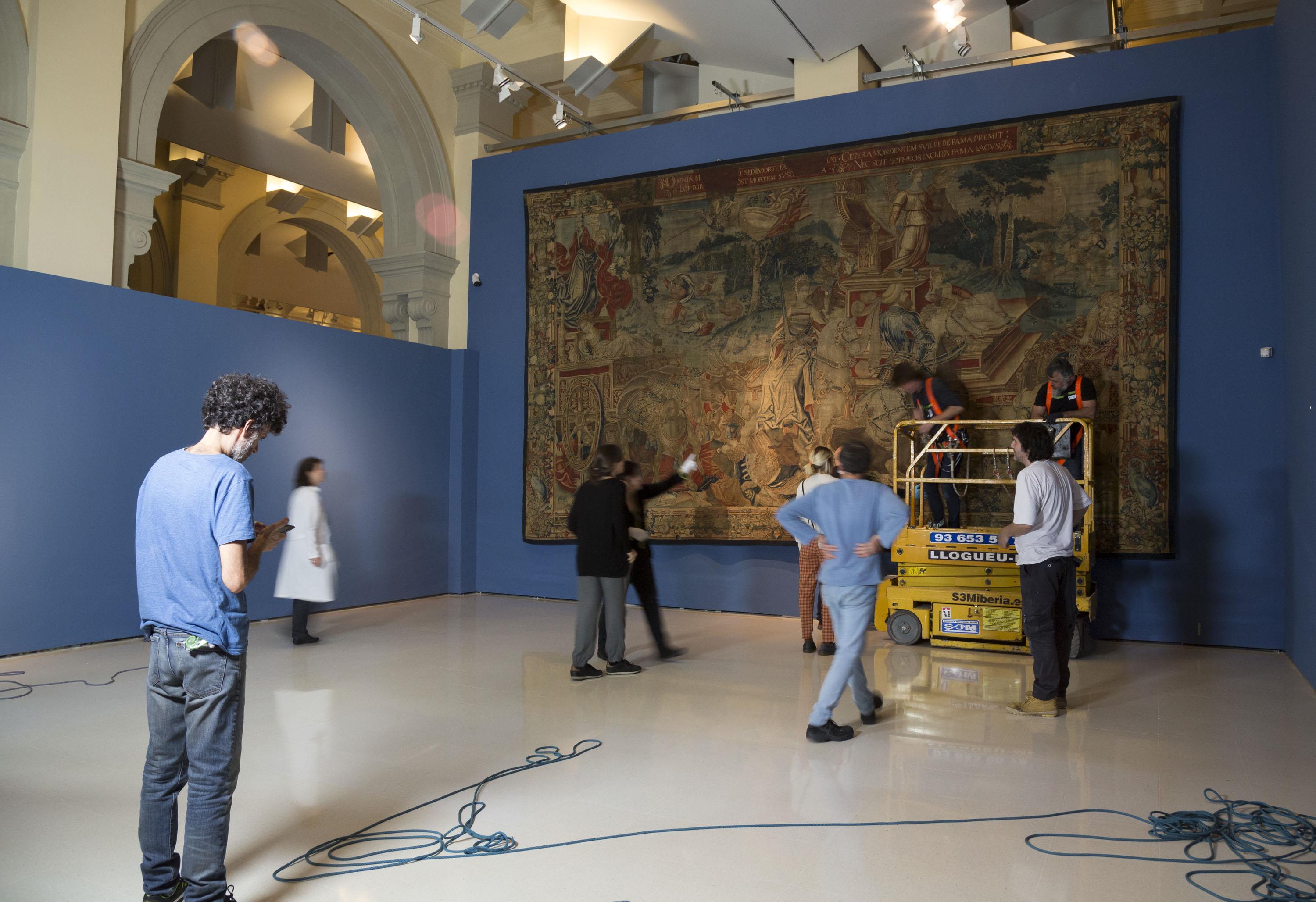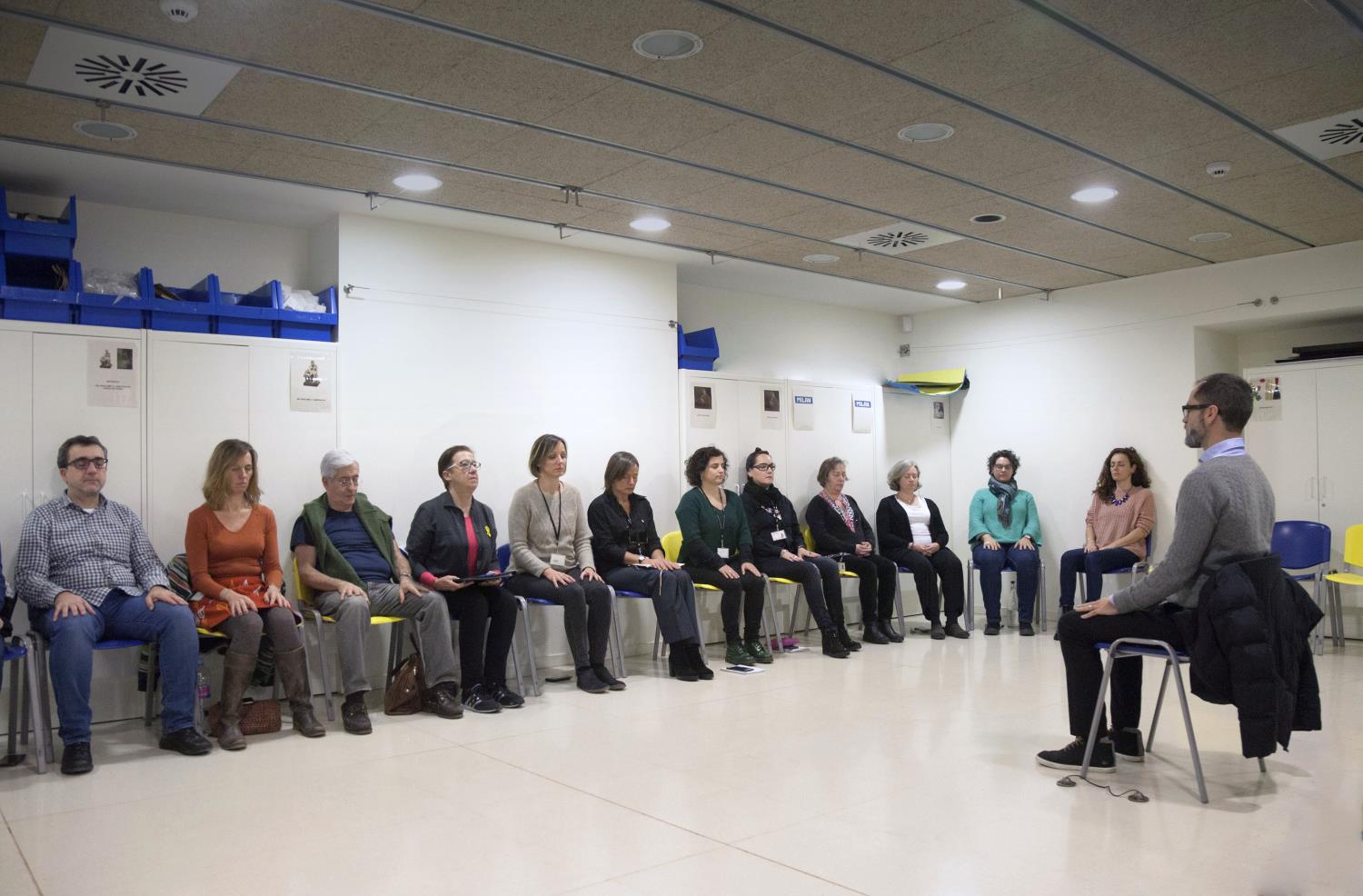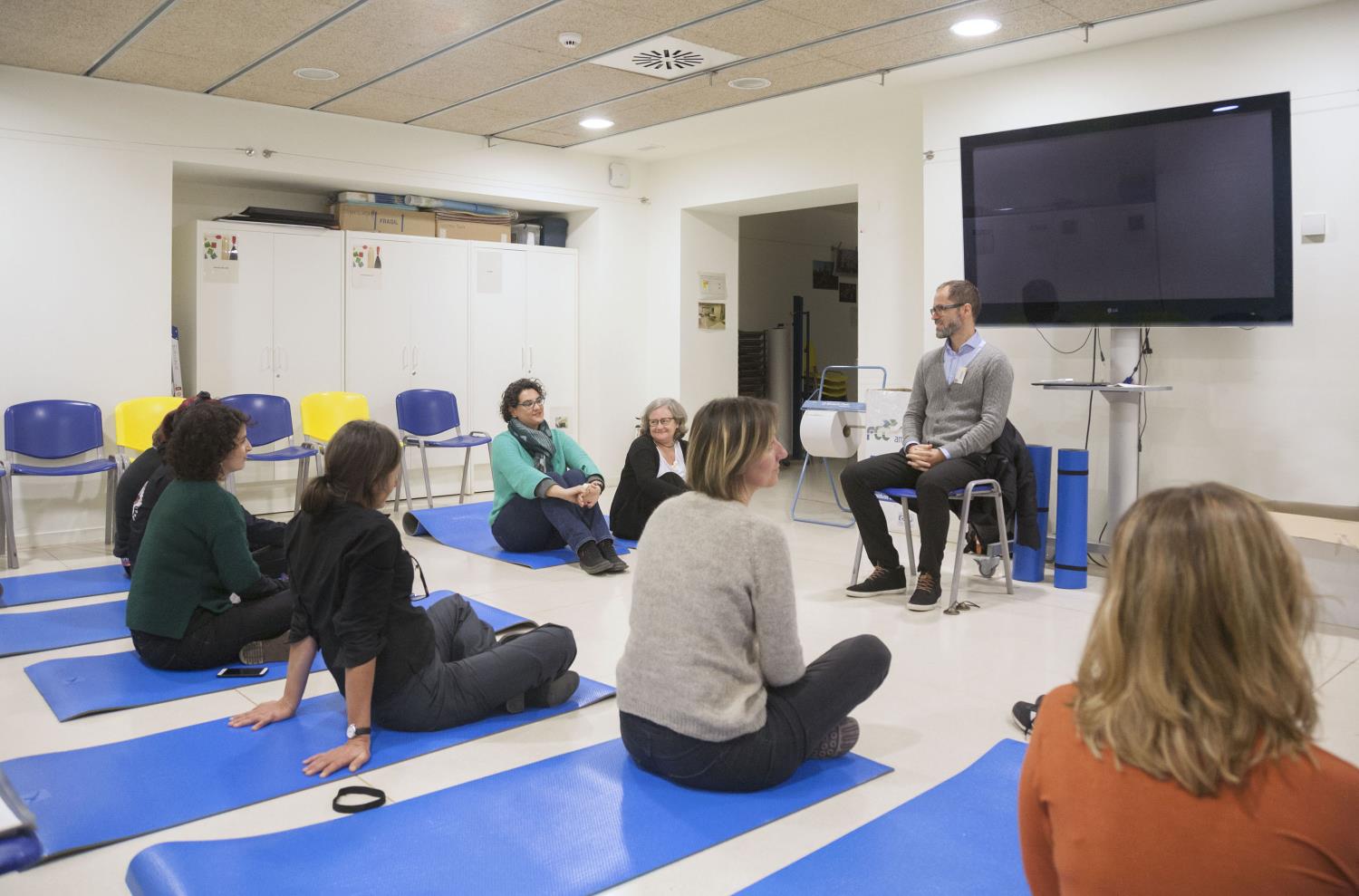Sandra Esteban
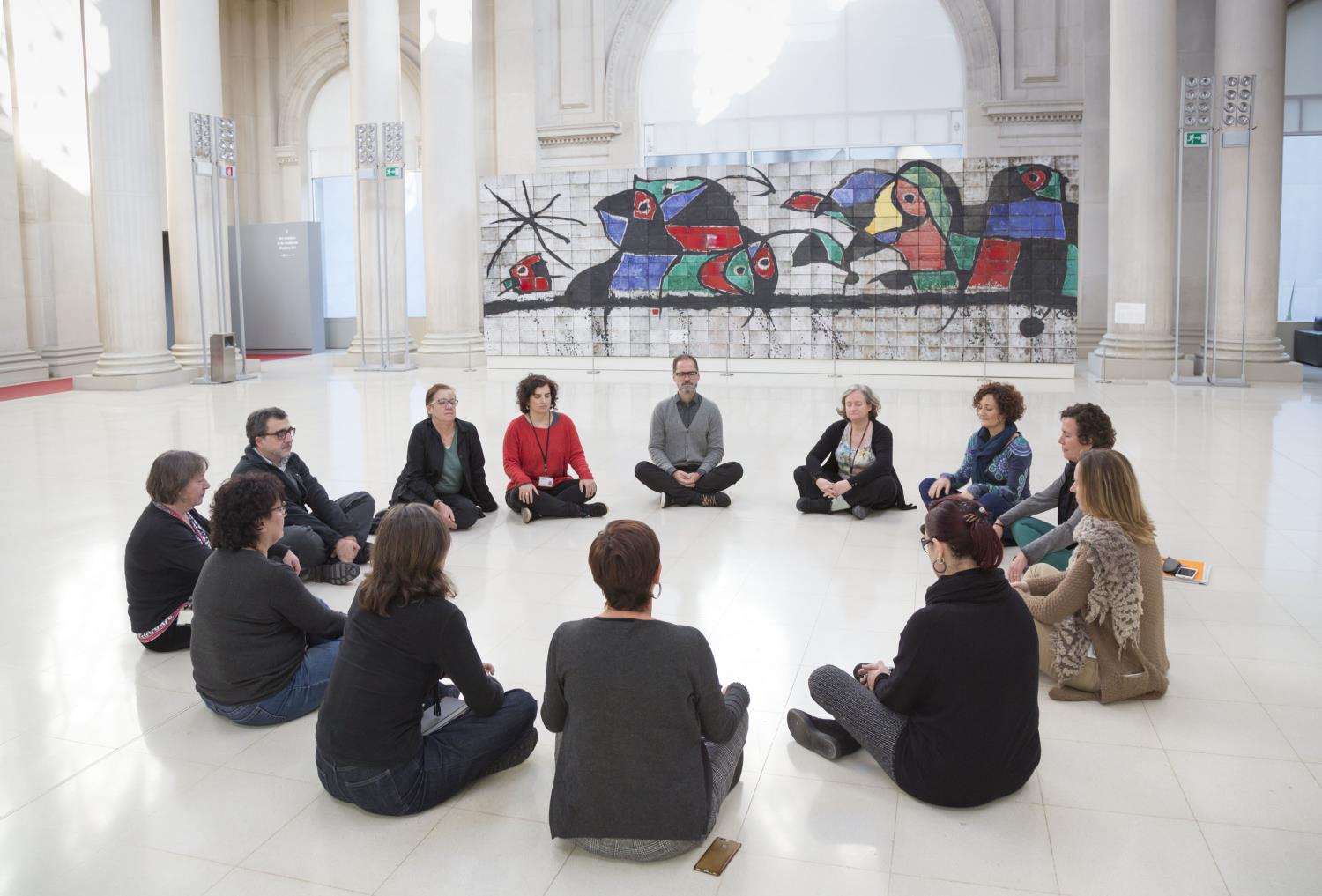
A new training in the museum
If, as workers of the museum, someone had said to us a few years ago that we would do a course on mindfulness, we wouldn’t have believed it. Languages, computer skills, management techniques and systems, methodologies….they are the most common training courses that the companies have offered to us in recent years.
At last, new courses focused on the well-being of the workers have come, we hope, to stay. As workers, we need them and we’ve been waiting for them.
Management of time and stress, healthy eating habits, management of leadership, affective communication and trust building, are some examples of the introduction of training focused on another learning that also enriches us.
Companies also have to, or should, take into account this emotional learning. Looking after the workers in a more holistic way. If we work in a happier way, more motivated, more focused, we are also more productive and more efficient.
Mindfulness course in the museum
This past month of October, around twenty workers from the Museu Nacional signed up for a course in Mindfulness and comprehensive self-care with Dr Marcial Arredondo Rosas.
The aim of the course was to provide us with the tools to be able to manage situations of stress and to help us in emotional regulation.
Some of the reasons why the attendees signed up were:
- to learn to stop the noise in the mind
- to learn to manage stress in the working rhythm of the museum
- to reconcile better the working life with the family
- to learn to focus on a task and not become dispersed in many tasks at the same time
What is Mindfulness?
Mindfulness is a way of being. Being attentive at all times to what is going on in our interior and exterior, without making value judgements about what is happening. Mindfulness is self-observation.
If we get to know ourselves better, we’ll have more freedom.
Often, instead of being aware of what we are living in the present, we go into ‘automatic’ mode. We have a mental noise, we anticipate what may or may not happen which tends to evaluate the past … We become dispersed and our senses become disconnected.
There are two types of “modes” with which we function that illustrate this image very well:
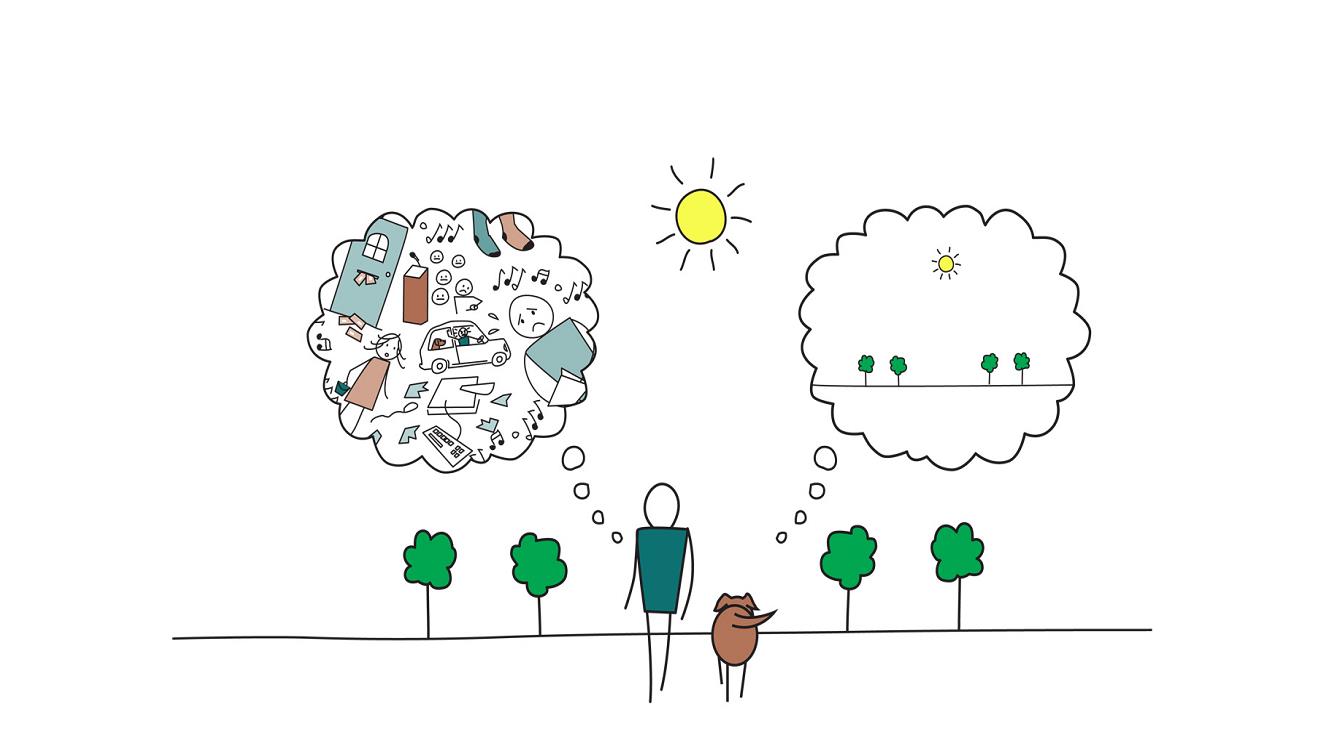
In the “awareness” mode or the “being” mode we keep our attention focused on the present, without travelling to another time or another place, different from the one we are living or where things are taking place.
When we go with the automatic pilot or “doing” mode we are physically in one place, but mentally we are in other places.
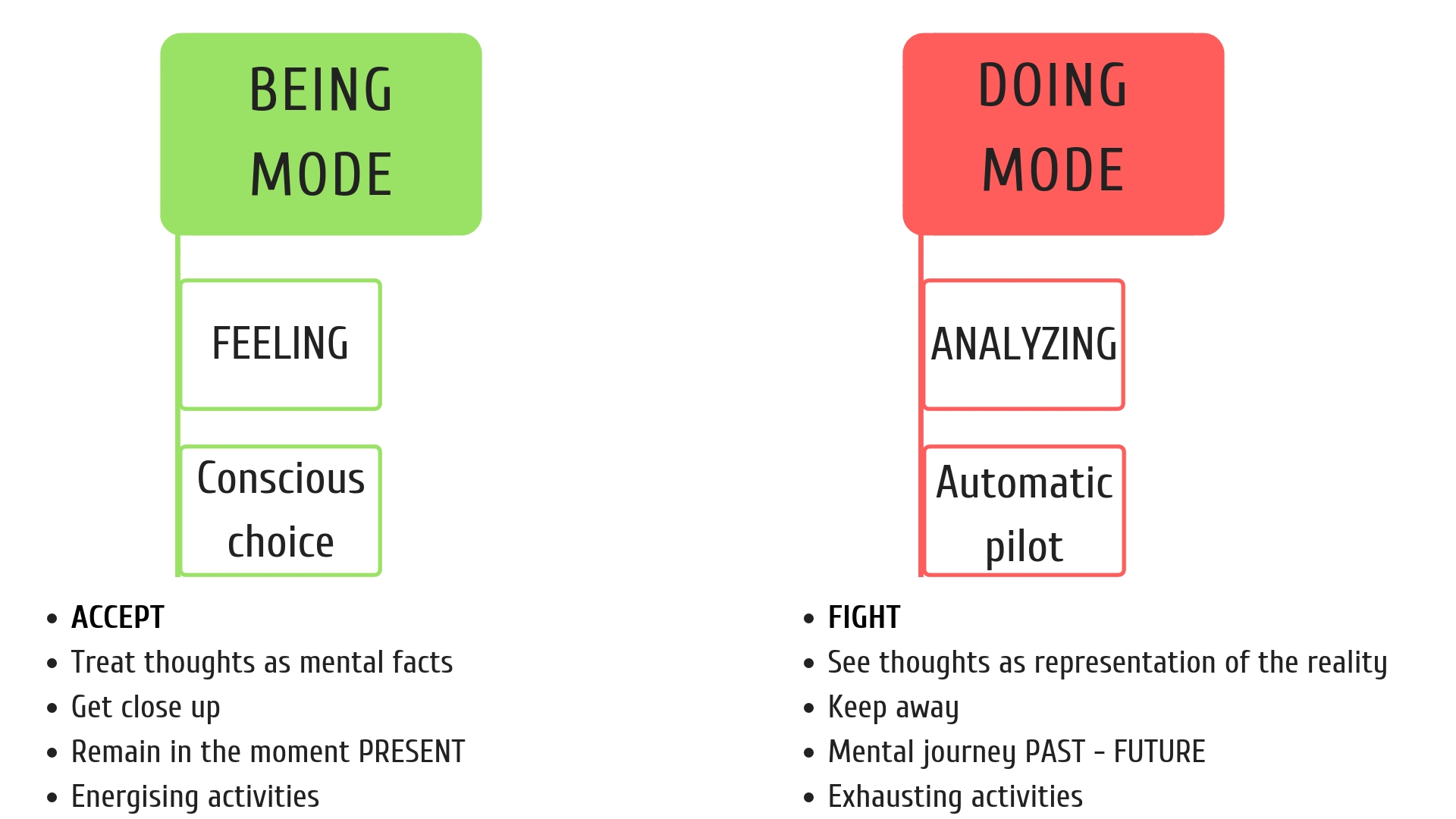
The 3 pillars of Mindfulness
- Intention: to have the intention of reorienting the attention
- Attitude of friendliness: not a demanding attitude. It’s a light effort, without tension.
- Attention: focusing our attention and placing it where we want it.
Mindfulness is not the same as happiness. It is to realize what we have in our exterior and interior, to sustain it. It is working with our conditions that we cannot choose (genetic factors, parenting, cultural, our surroundings, etc.) to achieve what we can choose: what version of ourselves we want to be.
Do we look at each other in a kind and compassionate way?
We often have more compassion with the people around us than with ourselves. In our times and in our culture, the tendency is to punish error, to criticize it. When we make a mistake or we do something wrong, instead of giving ourselves support, we punish ourselves. At a time when we need kindness, we respond with harshness. And that influences our self-esteem at all levels.
During the course we observed how we feel with ourselves when we treat ourselves kindly, in a contented way, as opposed to when we treat ourselves in a tough and strict way.
Experience has let us see that the relationship we have with ourselves in our interior, even if we are smiling or have a serious face, has an impact on how we feel.
According to Dr. Arredondo, we should feel an unconditional love towards ourselves, having a regulated self-esteem. We can train a more compassionate inner voice.
How do we regulate ourselves emotionally?
According to Paul Gilbert, we have 3 systems of emotional regulation:
- system of threat
- system of achievement
- system of calm-connection
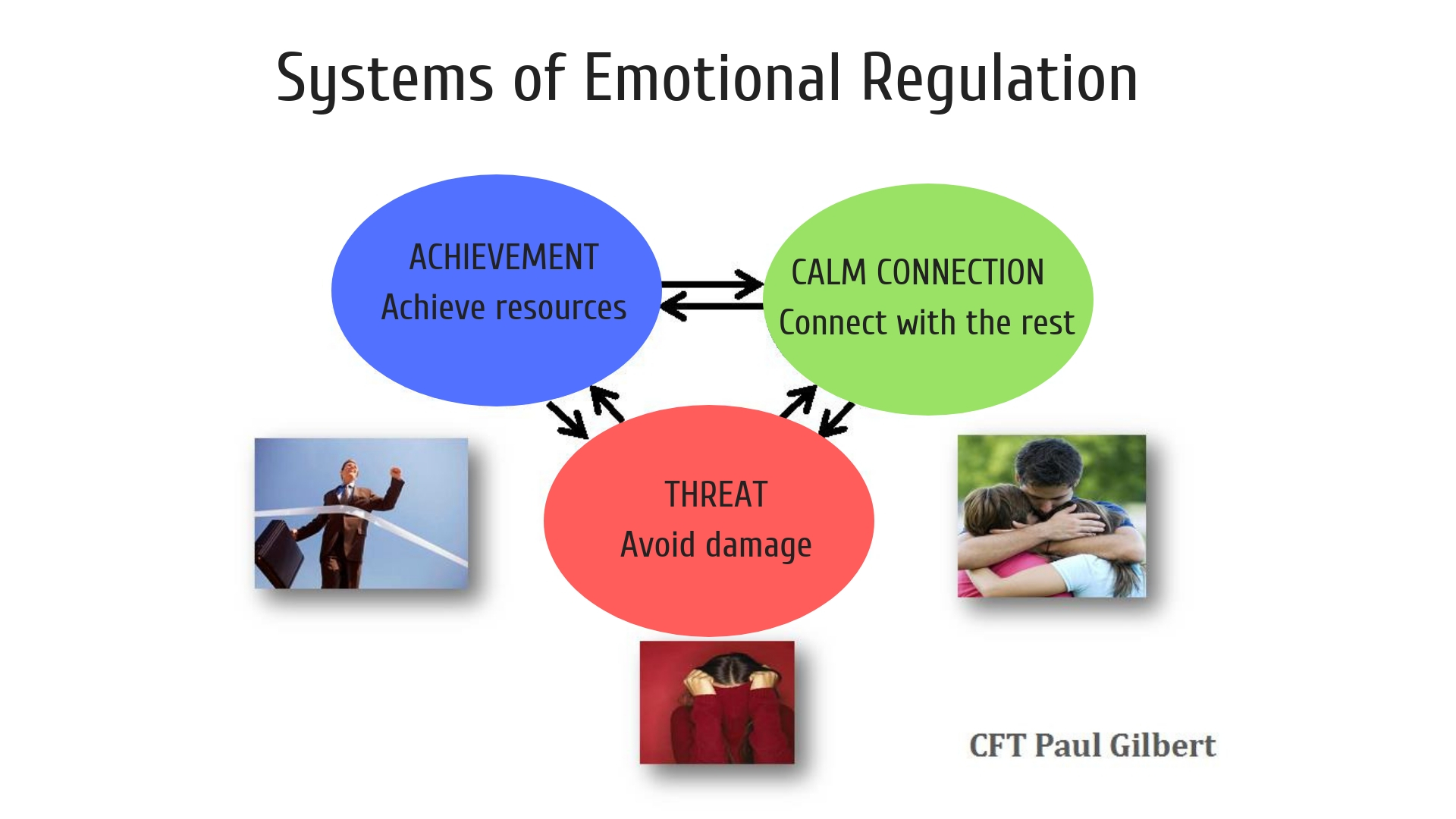
The threat system is activated when we detect possible dangers or threats. It is a system of fast action that causes stress, anxiety, anger, indignation, etc.The achievement system (achievements) is what drives us to seek the satisfaction of tangible and intangible desires and needs. When we achieve our goals, it gives us pleasure and a sense of well-being. From this system we connect with emotions of pleasure or excitement linked to stimulation.
When the calming system is activated, we connect with positive feelings, we feel safe. From this system we connect with emotions of well-being that are not linked to internal stimulation that provide a sense of peace and security.
Our threats come from our own thinking, we have great internal fights. If we manage to be present and calm, our mind becomes a place of safety.
Often in the maelstrom of the work rhythm, we live in an atmosphere of stress, with deadlines to be achieved, in short, we feel surrounded by threats.
Non-violent interpersonal communication
In non-violent communication, the important thing is not who is right, the important things are the needs. As much one’s own needs as those of others.
Feelings are not caused by others, they are caused by the unfulfilled needs themselves.
In non-violent communication, all needs have the same value, both ours and those of our interlocutor.
The stages of non-violent communication are:
- Observation
- Feelings
- Needs
- Request/strategy
First there is a stimulus that triggers a feeling or feelings. In observation we can use mindfulness, and with the observation of the body and compassion we can know what feelings we have. The next thing is to see what unfulfilled needs there are behind what we feel.
Finally we end up being able to do or to request something in order to satisfy our needs.
It is important to make a request and not a requirement. With a request, the system of calm connection is activated, the other person sees it as an invitation and cooperation. From the demand, the system of fighting is activated and can cause feelings like: submission, opposition, resentment, rebellion.
In what way do you want others to do what you want them to do? Depending on the way we ask for it we can cause them to do so from fear and submission or from trust and cooperation. You choose.
Practising Mindfulness
In the training we progressively carried out exercises to learn different Mindfulness techniques.
For example, closing your eyes and putting your mind in focus, stopping at the subtle things, calming your breathing, focusing on some part of the body or checking the body from top to bottom. The mind tends to wander away but in practice we have to bring it back to focus.
Dr. Arredondo explained to us that we shouldn’t respond in a reactive way to our thoughts so as to respond with greater awareness.
If in practice some concerns arise, we have to observe them, not focus on the concern itself. Let it pass and go away. Allow what comes to mind to appear.
Sometimes we have pain when we practise or there is some discomfort at the time of practice. We have experienced that if we focus the mind, we take the pain to the second level and it is no longer the protagonist.
We did some practice aimed at noticing ordinary moments of our everyday lives that provide us with well-being. Small moments in our routine that bring us happiness and well-being, ultimately calm. Instead of recreating yourself in negative experiences, look at what nurtures us. Connect with a nice situation and sustain it.
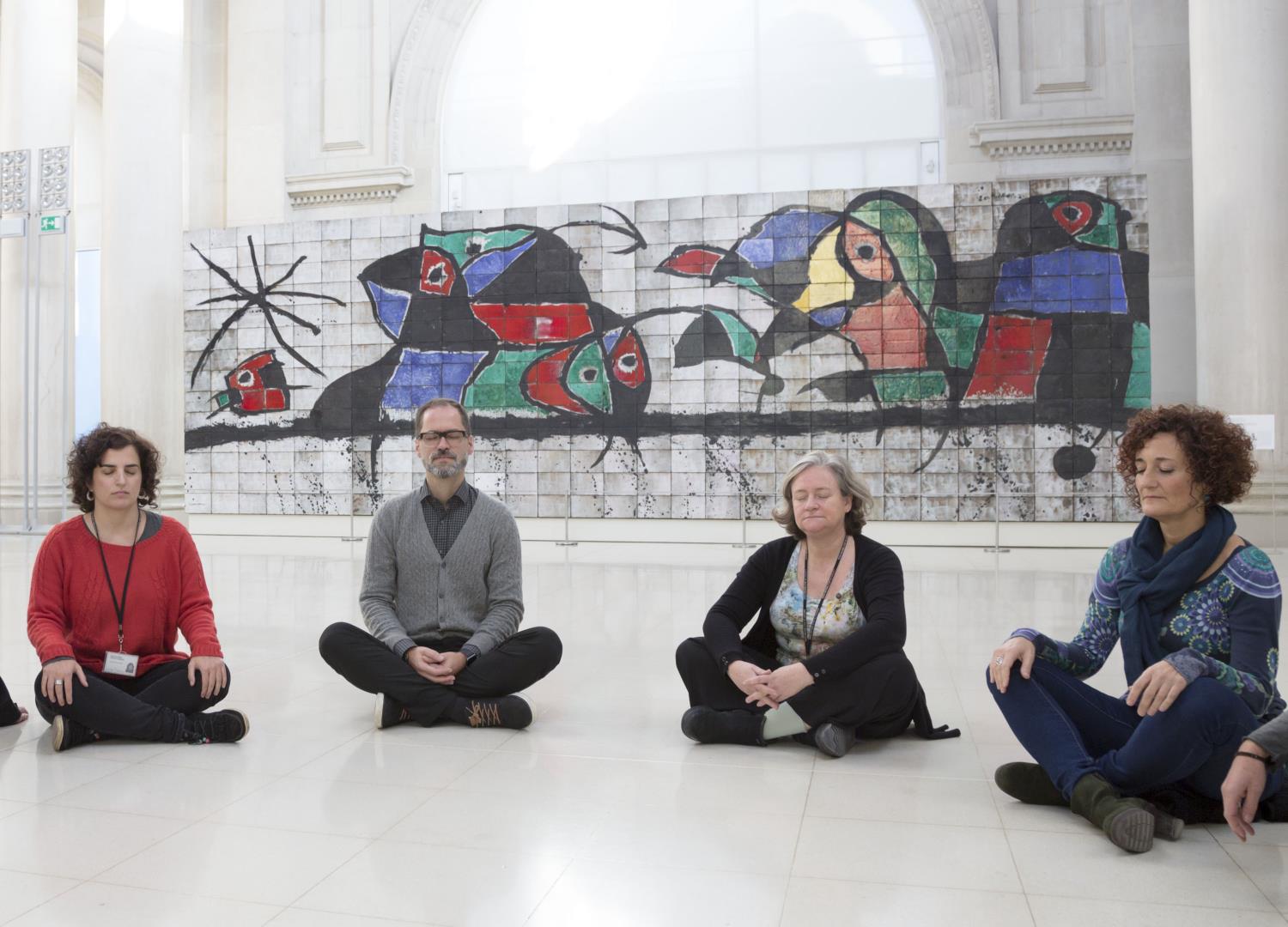
Some quotes that have made me think
“My life has been full of terrible misfortunes most of which never happened.” —Montaigne
“Between stimulus and response there is a space. In this space rests our power to choose the answer. In our response lies our growth, freedom and happiness”
— Víctor Frankl
“We are like Velcro for difficult or unpleasant experiences and like Teflon for pleasant experiences” —Rick Hanson
Concluding the training…towards the acquisition of habit
On completing the six mindfulness training sessions we all coincided in evaluating it very positively.
We have learnt to be aware that when we put ourselves in automatic mode, or when we are faced with a worrying situation, we feed the worry with our own minds. First we have to accept the situation, don’t resist it and afterwards breathe. By activating the “being mode” we regulate our emotionality.
We can only act on ourselves, it is not in our hands to change others or what is not in our hands. Acceptance.
We have also learnt that it is possible to call on the inner voice that considers oneself, the one which cares for us and makes us feel good instead of the voice of self-criticism and self-demanding.
Everything we do in an aware way is enriched, whether it is eating, practicing sex, walking, listening to a companion, looking at a work of art , etc. With awareness it will have more flavour, it will be more authentic and will have more intensity.
We still have a long way to go to get the habit and use mindfulness in our everyday lives but thanks to the course we already have quite a few tools to do so.
When will the next course be?
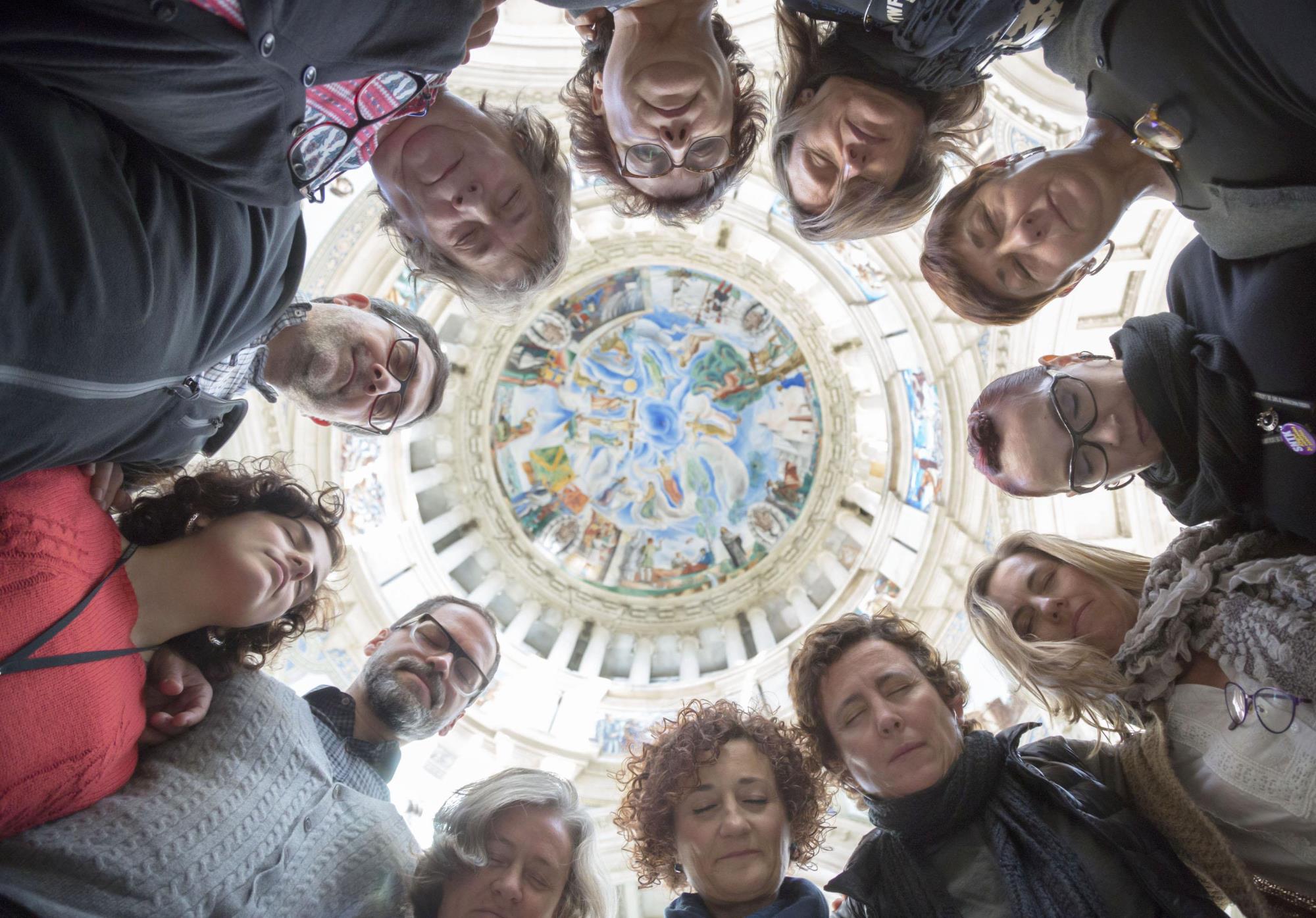
Related links
Matthieu Ricard – Altruismo y Neurociencias, Youtube
Projectes digitals

